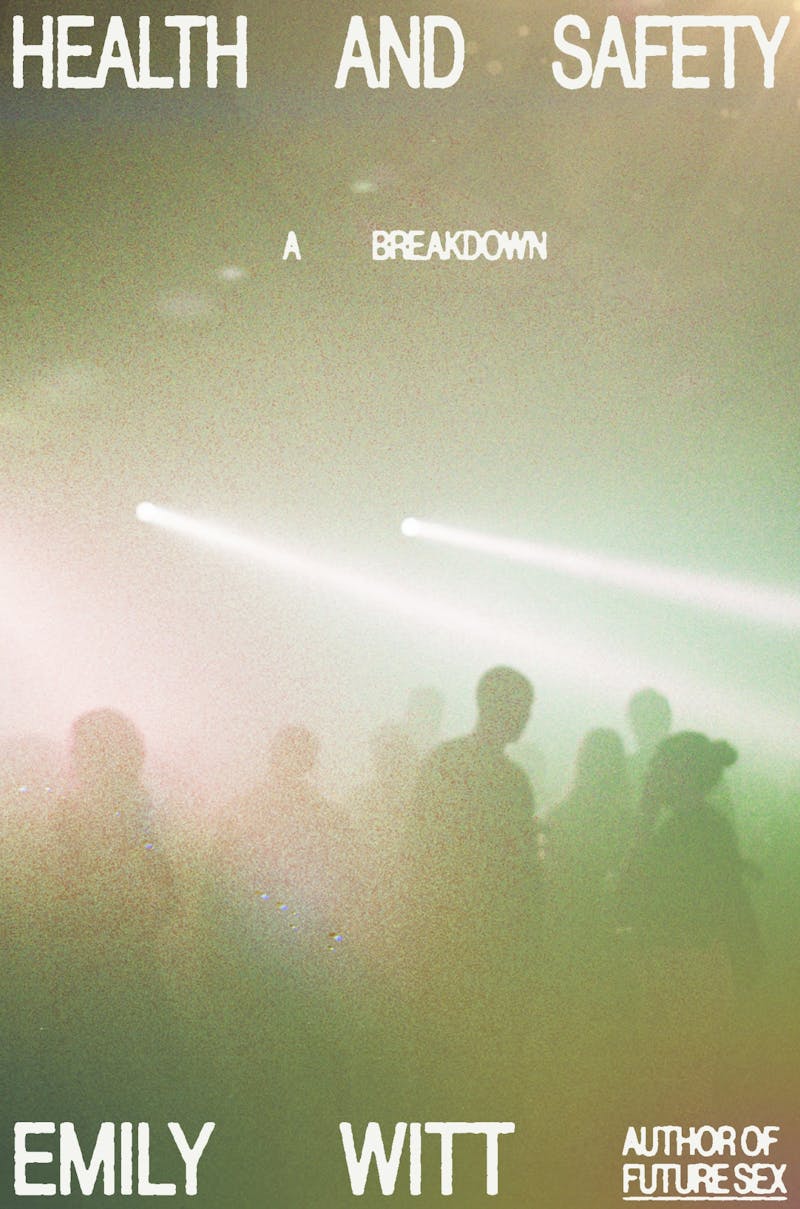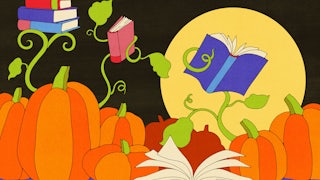Emily Witt’s favorite drug is acid—specifically between 75 and 100 micrograms two or three hours before leaving the house. It never causes a hangover, it lasts all night, and its effects can be amplified or dulled down with other drugs. On the right amount of acid, Witt feels happy to be around others, but not so delirious that she might mistake someone she doesn’t know for a friend. LSD is also a fairly straightforward drug, hard to lace with other, more risky chemical compounds, and thus relatively safe for human consumption. Besides, “as a straight white girl from the Midwest, the archetype of the nerdy midwestern acid freak … was an established role I could comfortably inhabit.”
Witt discloses this preference halfway through her new book, Health and Safety, a memoir about love, work, and Brooklyn’s rave scene in the 2010s. In 2012, after she went off the antidepressant she had been taking for many years, she quit her full-time job at a newspaper and became a freelance writer. She was at work on her book Future Sex, but was already preparing to investigate another kind of hedonism. Before turning 30, Witt had been tentative about trying recreational drugs, worried about how they might interact with her dose of Wellbutrin. But after she stopped taking the medication, she felt free to experiment. After smoking DMT for the first time with a friend, Witt became fascinated by the concept of altered consciousness. “That this cognitive experience could be generated by the interaction of my brain with a chemical found in plants amazed me,” she explains at the book’s outset. “That our biology enabled us to trip could not be an accident. I wanted to understand more.”

At first, Health and Safety appears to be, like Future Sex, an entertaining, provocative, first-person reported book about the subcultures surrounding a recreational activity. Health and Safety is not quite the scientific and cultural history that Michael Pollan offered in How to Change Your Mind; nor is it as experimental as fellow raver McKenzie Wark’s Raving, an informal, sometimes diaristic book that explains what it feels like to stave off gender dysphoria by letting loose on the dance floor. Witt has written something more expansive, borrowing elements of both genres. It is both a researched history of drugs and electronic music and a firsthand account of consumption and escapism. But it’s also an exploration of how one squares extended periods of partying with an otherwise conventional adult life—with its commitments to long-term partnership and full-time work.
While Witt’s work sometimes covers the culture of drugs and dancing, she has also reported on pressing social and political issues: school shootings, police brutality, the alt-right. That work turns Health and Safety into something much more complex than a meditation on dancing and drugs. Namely, it is a book concerned with how people express their political frustration; how they take it out on others, and how they channel it into their everyday lives and personal relationships.
When Witt sets out on her drug journey, she doesn’t “understand the point of being on a psychedelic at a bar or a party.” At first, her experimentation isn’t about meeting people, or immersing herself in music. Only later does the research swallow her whole. Eventually, the end of the workday and the start of the night become indistinguishable, even if she is closing her laptop and sliding on her sneakers.
After trying DMT, she samples everything she can get her hands on: ayahuasca, acid, MDMA, magic mushrooms, ketamine. She reads books about drugs, learns about appropriate dosages and interactions, attends drug conferences, and goes to Burning Man. (This last one is a two-for-one research project, as the festival is an oasis known both for tripping and “consent tents.”) The drugs, at first, aren’t about meeting people, but inevitably she does. At the first ayahuasca ceremony she goes to in upstate New York, she meets an attractive guy named Matt who is really into mushrooms and self-help. She dates him for a couple years despite never really liking him that much, and their relationship is fading when she meets someone who, for the book’s purposes, she calls Andrew: a raver who makes music and organizes his life around partying.
She and Andrew do drugs together and go to parties together. They fall in love, and he introduces her to a whole new set of ravers who go out in Brooklyn, upstate, and Berlin to dance to techno and house D.J.s. “My world oriented itself like a compass toward a magnet,” she writes of Andrew. “Toward his tastes, his friends, the social scene I wanted to inhabit.” But where the story really starts to gain traction and where the book’s subhed—“a breakdown”—begins to make sense is when Witt’s work as a journalist moves to the forefront and the partying fades into the background.
In 2018, she interviews for a job at The New Yorker and is sent to Parkland, Florida, to write about the aftermath of the Marjory Stoneman Douglas High School shooting. Trump is president, the culture wars are heating up, and increasingly, she is covering what can only be described as “the violence beat.” She travels back to her hometown of Minneapolis, where an anti-Muslim activist interrupts an Ilhan Omar campaign event with her screams. She attends a Trump rally in Houston where supporters carry AR-15s and tell her that immigrants are “flooding into America to loaf, steal, and sell fentanyl.” She goes to Kenosha, where Kyle Rittenhouse kills two protesters. She becomes immersed in dark stories that would keep any sane person up at night. Coming back to Andrew and her local joints in Bushwick allows her to “forget about America and its problems,” if only for a little while.
These are the kinds of stories Witt is working on when Covid-19 hits Brooklyn, in the aftermath of the murders of George Floyd, Ahmaud Arbery, and Breonna Taylor, and the reignition of the Black Lives Matter movement across the country. The pandemic dramatically upends nightlife, taking away the community and outlet that ravers, Witt included, once had to blow off steam. D.J.s move into Zoom squares and stream their music on online platforms for fans, but “club music without the club was devoid of so much of its purpose.” The new slowness of life, however, also helps Witt come to the realization that her “most transcendent drug experiences were probably behind me” anyway. She thinks about leaving New York, and perhaps becoming a mother while she still can.
Meanwhile, her work as a journalist is only becoming more important—and more frustrating to Andrew, who is depressed, disengaged, stung by the loss of his lifeline, and also a little resentful of Witt’s career. Journalists, he comments, “made their names by piggybacking on acts of violence and injustice.” It’s with this attitude that Andrew grudgingly joins Witt at a Black Lives Matter protest in the Bronx, where he is beaten up and eventually taken into custody by the cops. Witt, in a fit of panic, escapes the violence with her press pass.
Everything goes downhill from here. Andrew is jolted into action after getting released from jail with minor injuries. He becomes fixated on the way that cops violated him. He starts researching policing strategies and decides he wants to order protective gear from Amazon. He has what turns out to be a manic break, and his resentment blooms into anger. As their relationship slowly falls apart, Andrew harasses her with text messages, reveals details about other women he’s slept with (they had an open relationship), threatens to change the locks on their apartment, calls her “a Karen” and “a cop,” and pees on the couch in her office. At one point, he becomes convinced that anyone who thinks he needs help—friends in their circle, his own mother—only thinks as much because Witt told them lies. He takes on a reactionary mode Witt describes as “a Trumpian logic.” All the while, she is trying to report on City Council meetings in New York and protests in Louisville.
Adrenaline accumulates in this part of the book, as one begins to feel the nearly visceral way that violence comes to define Witt’s life at this moment, the dynamics of her relationship refracting the angry and emotional political climate. “The stagnation of the previous month,” she writes, “had been replaced by a new, vicious energy, and righteous political anger that I could not seem to sufficiently meet or respond to.”
The sentence describes Andrew’s behavior after he is released from jail, but it could just as well characterize that peculiar moment in history, when social isolation, layoffs, and deaths from disease and political violence fed emotions and reactions at a rate too fast to appropriately calibrate in real time. On Twitter, Trump called Covid the “Chinese virus,” and his supporters followed with even worse slurs; in St. Louis, Patricia and Mark McCloskey pointed guns at protesters; and in Minneapolis, an anti-government collective called Unicorn Riot burned down the Third Precinct of the city’s police department.
Trump and his supporters had primed the country perfectly for this zenith of anger, Witt suggests through the patterns of her own reporting. “I was writing the same story over and over; and recent history was mutating and becoming recombinant,” she writes. Kyle Rittenhouse replayed the vigilante violence of George Zimmerman, while the internet fostered a supercharged combination of Alex Jones and the homophobic hate group Westboro Baptist Church.
In narrating Andrew’s descent into rage, Witt startingly captures the mood of the Covid years: a period when many took part in a mass competition to see who could be the most righteously outraged, each performing in a global morality pageant. “He spoke not with his own words but in the borrowed language of racism and trauma,” she writes of Andrew after he is released from jail and crowned with a newfound martyrdom. “Which in that time was the most unassailable language a person could deploy.” Andrew is frustrated by the system and his claustrophobia. Without a way to vent those feelings, Witt, with her “elite media job,” becomes a target. “Discarding me, had become, for him, an act of ideological purity,” she writes. “He had cast me as a stand-in for the failure of liberalism.”
Andrew’s angry words get into her head, and force her to question her own conception of herself: “I was left to convince myself of the integrity of my politics, which I was incapable of doing, because of course I was culpable.” Andrew’s comments about her opportunism felt at points too obvious to be worth her energy. But, she allows, he “had national opinion on his side.” The conundrum raises the question of what we owe, as writers, to people when we are reporting on violence—physical, emotional, or otherwise. Is what journalists do in fact, as Janet Malcolm famously proposed, “morally indefensible”? Or, as Andrew seems to indicate, is a reporter just “ideal terrain” for “misguided virtue signaling”?
The answer is not exactly clear, and finding it is not really Witt’s goal, either. For, after all, Health and Safety does not attempt to define stability, health, or safety. Rather the book is about striving for all those states of being in a tumultuous, difficult, and violent period. Dancing on drugs for 15 hours at a time may seem to some an irresponsible way to deal with reality. But when you revisit those unpredictable and dangerous moments of lockdown, the nightlife scene starts to look like one of the few places that still made sense.






